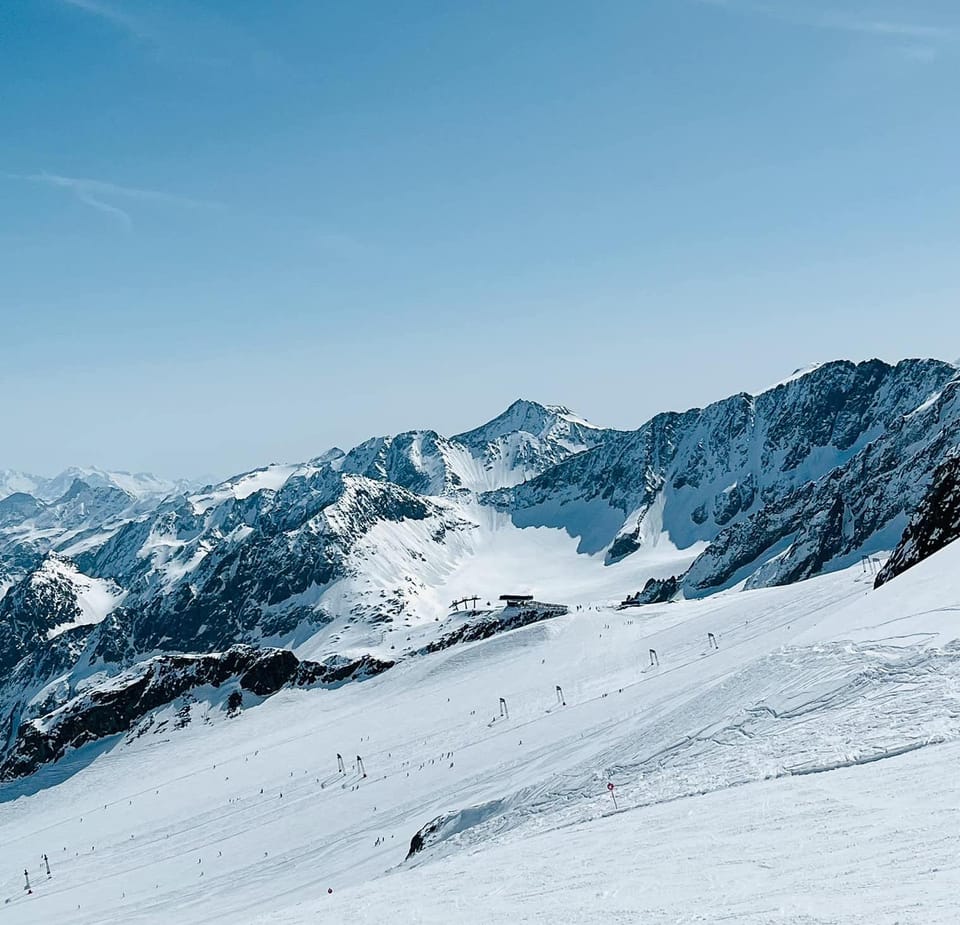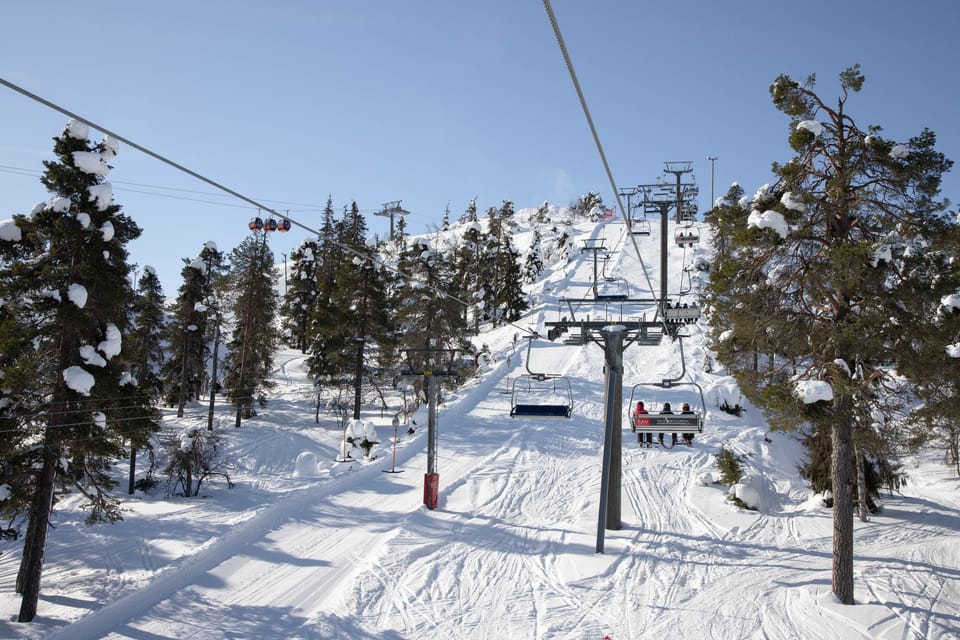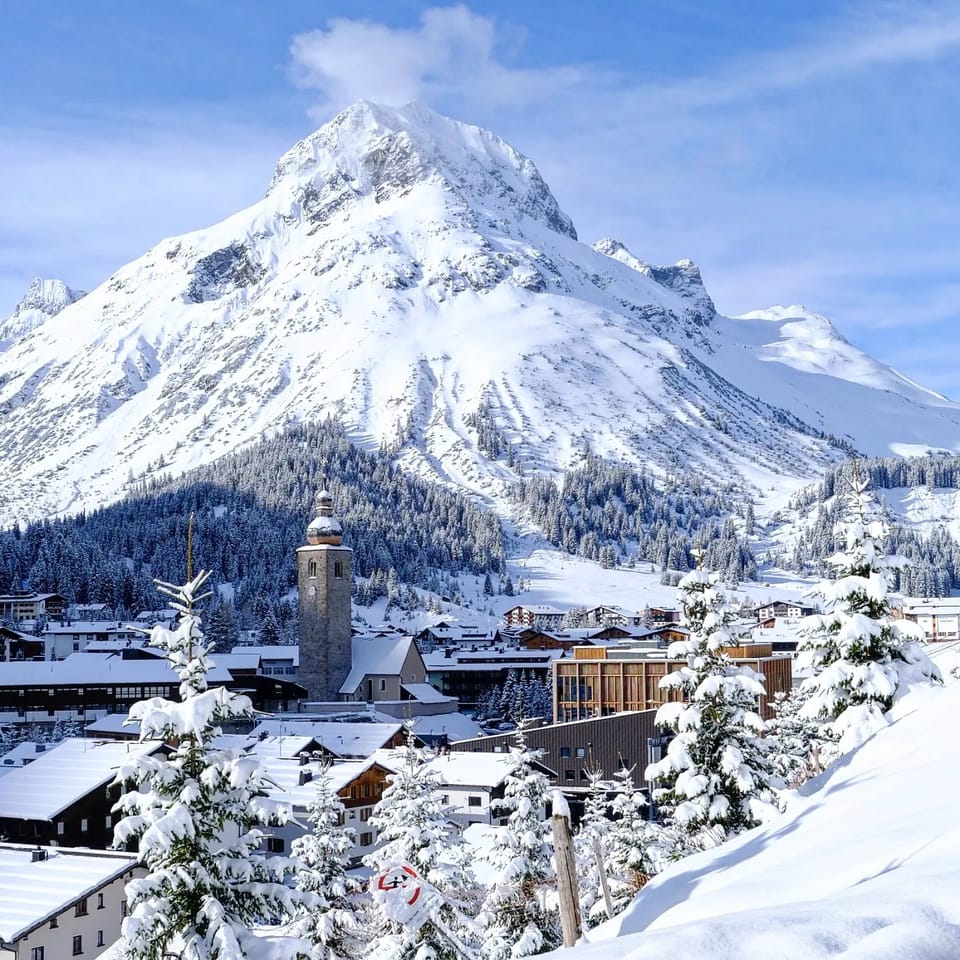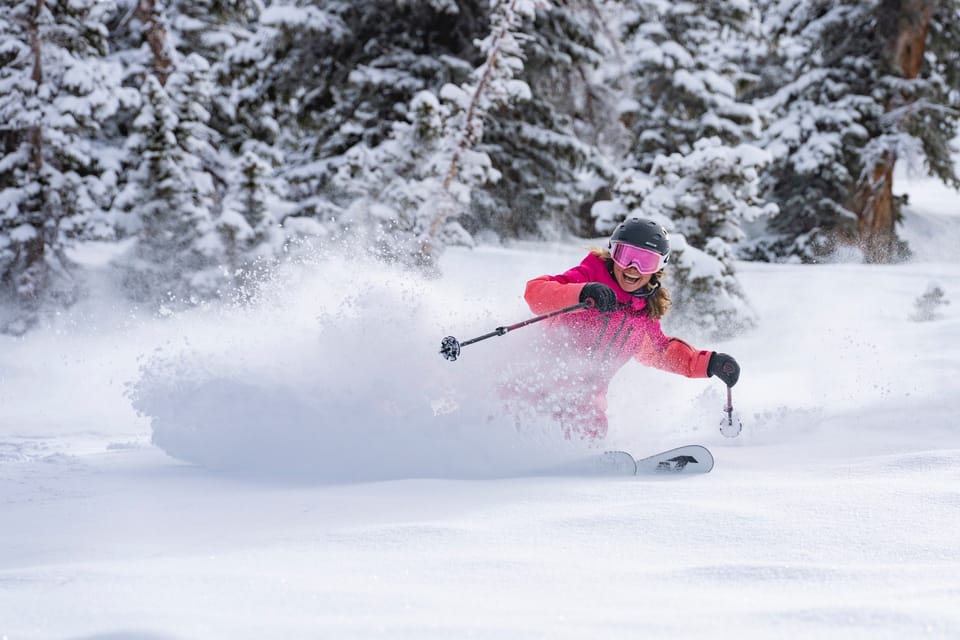EUROPE WEEKLY ROUNDUP #228
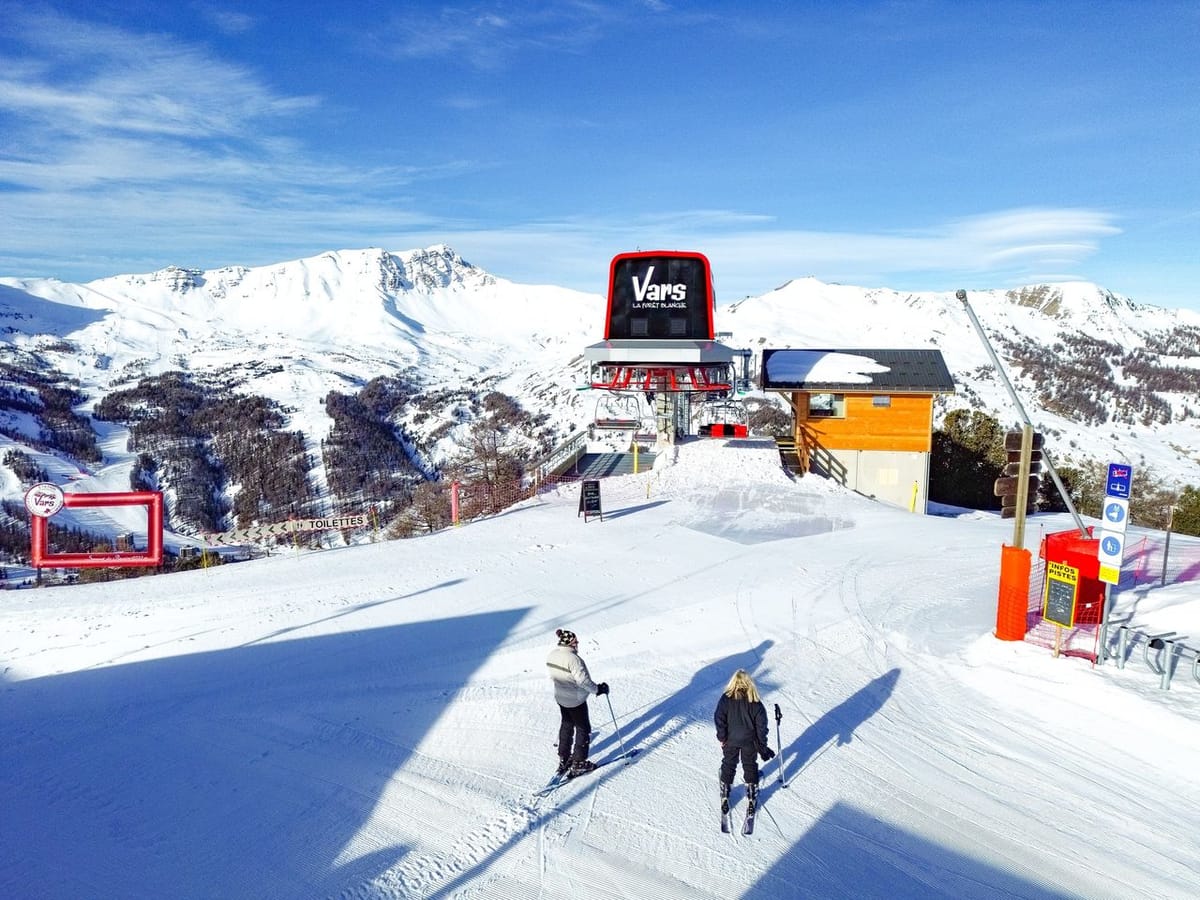
EUROPE INTRO
It’s been another mostly dry, mostly sunny, and very warm week across much of Europe, with the Western Alps and southwestern areas including the Pyrenees seeing the most extreme warmth. The freezing point has again been up above 3,500m in the afternoon, higher than most top lifts, and temperatures as high as +15C have been reported in low valleys. This is clearly not good news for snow in late January/early February. The only positive is that we did see good snowfalls earlier in the season so above 2000m cover remains good and as most big-name ski areas have much of their terrain above that height, most still have all their runs open. But it is generally old, hard-packed snow conditions with a freeze-thaw cycle you’d normally expect in spring already well underway. The avalanche danger has dropped- at least if you can still find snow worth skiing off piste, that is. Gale force winds have also been thrown into the mix, particularly in the north of the continent. Many ski areas across Scandinavia were closed going into the weekend by the most violent gales since the early 1990s and Scottish centres continue to be impacted by strong winds there. However, on the Scandinavian side at least, the storms brought a lot of fresh snowfall, as well as heightened avalanche risk. The good news for the Alps is that the weather is finally changing, with colder, snowier conditions now forecast.
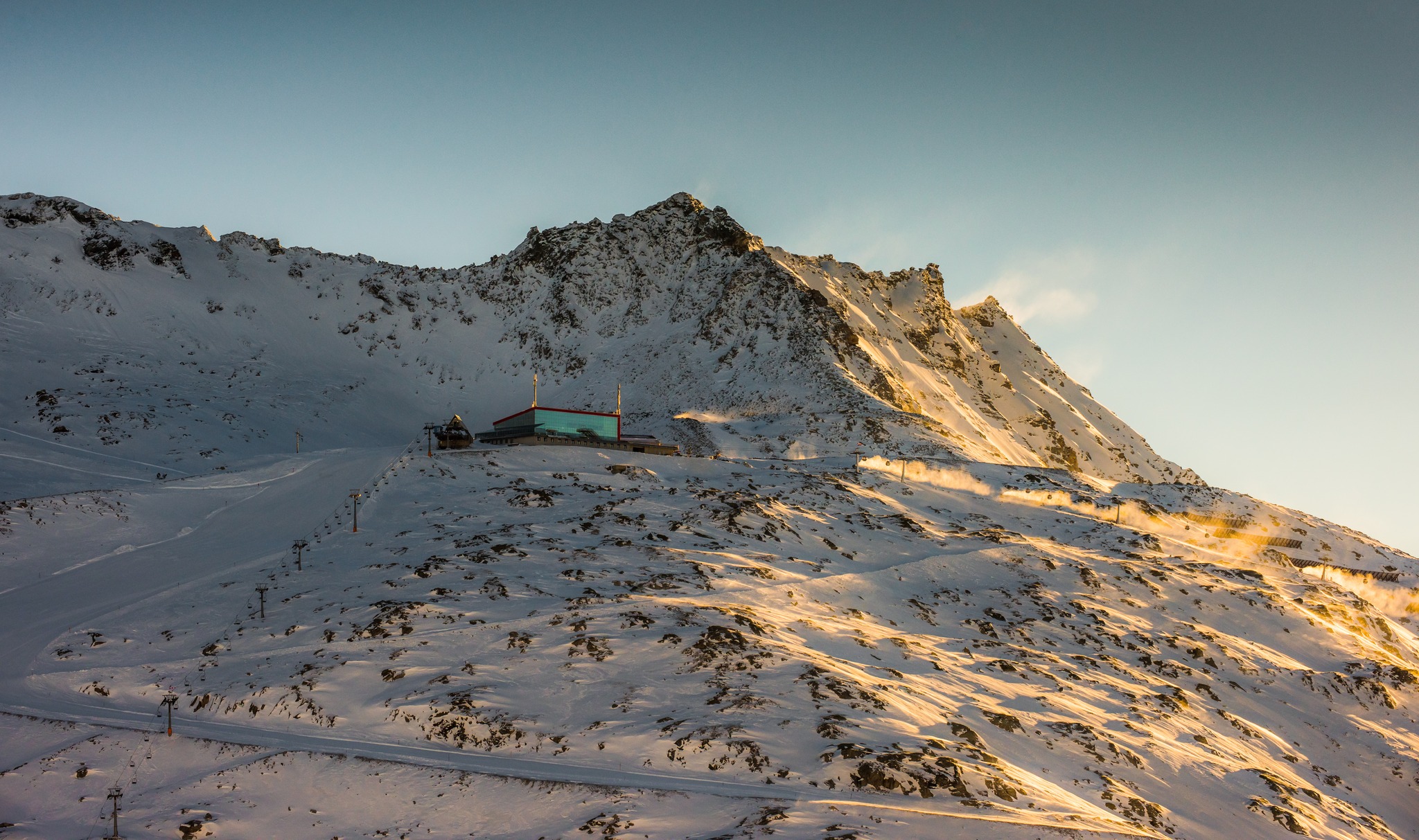

Image: European snowfall summary overview for the next 3-6 days.
AUSTRIA REPORT
As forecast, the past week has remained predominantly warm, dry and sunny across Austria. That being said, there have been some snow showers for some higher slopes, with the warm temperatures occasionally drawing in cooler air from the north. The main thing, however, has been valley highs hitting double figures above zero again in the afternoon and the freezing point reaching as high as 3,500m – higher than the top Austrian lift. The warmth is taking its toll on low slopes but most Austrian areas, at least the big-name resorts, are prepared and have enough snow piled on low runs to withstand the thaw- it’s just not very fresh. Kitzbuhel (70/101cm / 28/40″), for example, remains 100% open, and most other Austrian regions have 90% or more of their slopes available.
AUSTRIA FORECAST
A day or two more of very warm temperatures should finally give way to a change from Thursday onwards with colder temperatures and fresh snow forecast. The only issue may initially be that as precipitation meets cooling air some lower slopes may initially see rainfall rather than snowfall.
SWITZERLAND REPORT
Swiss ski areas have had the same sunny, warm week with temperatures into double figures in valleys and the freezing point up above 3,500m in the afternoons there too. The country’s snow depths were relatively good before the warm spell began a fortnight ago, in most places at least, so while freeze-thaw isn’t welcome to high elevations this early in the season, at least most slopes remain open. Higher resorts like Saas Fee (63/310 cm / 25/124”) have begun pointing out on social media that their glacier-crowned runs, which are among Europe’s highest, are particularly well placed in the current conditions. The 4 Valleys (40/270 cm / 16/108”) around Verbier continue to post the most open terrain entirely in Switzerland with 390 km of slopes (over 95% of the maximum possible area) available.
SWITZERLAND FORECAST
The protracted period of warm weather is thankfully expected to end in the latter half of this week with temperatures dropping back down towards seasonal averages and moderate snowfall forecast across the country’s ski slopes from Thursday onwards.

Image: Switzerland snowfall forecast for the next 3-6 days.
FRANCE REPORT
The state of French ski slopes became apparent last weekend when downhill races planned for Les Houches in the Chamonix Valley (celebrating the centenary since the FIS was established in the famous ski town) had to be abandoned due to the warm temperatures. As with the rest of the Alps, valley highs have been up at +8 to +12C at and below 1,000m altitude. The freezing point is up as high as 3,500m so base depths are dropping, particularly on lower slopes and the snow quality is also not great below 2,000m or off piste either. However, French ski areas are still posting the world’s deepest bases on higher runs and most centres remain almost fully open. The 3 Valleys, for example, still have the most terrain in the world open, around 560km (350 miles) of runs and the other big French areas also have 90% or more of their terrain open. In other good news, the avalanche danger has dropped from 3 to 2 on the scale to 5 in most areas.
FRANCE FORECAST
The weather should finally begin to change from Thursday onwards, with clouds and light snowfall moving in as temperatures fall. We may again see rain initially in valleys, but it will be getting colder and the snowfall heavier as the weekend approaches.
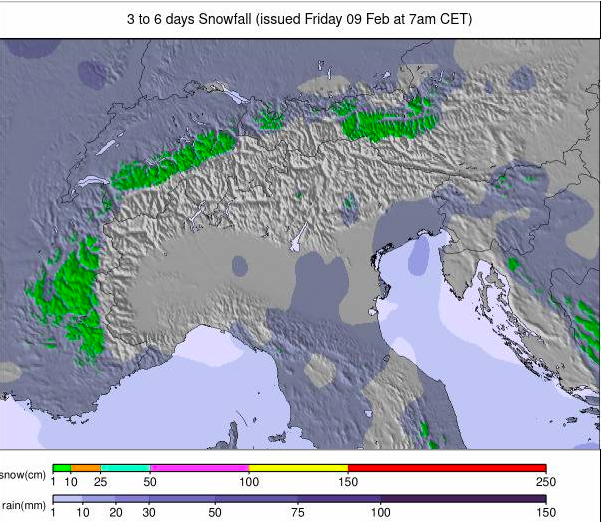
Image: European Alps snowfall forecast for the next 3-6 days.
ITALY REPORT
Italy has also enjoyed a week of predominantly dry and sunny weather, with the warmest temperatures in the south and west of the country, where valley temperatures have reached +15C at the height of the afternoon at the lowest altitudes. Despite this, most of the big Italian areas are still 80-95% open, as a result of preparing for this scenario by piling snow on low pistes. The cross-border Via Lattea (Milky Way), including the slopes of Sestriere, Sauze d’Oulx, Claviere and Montgenèvre over in France (165/215cm / 56/86”), is posting the most terrain open in Italy, up to about 70% of its terrain and 275km.
ITALY FORECAST
Much colder temperatures at altitude to end this week, with some significant snowfall likely from Friday (though that’s still a little too far off for certainty on just how much!). Valley temperatures are not dropping hugely so the danger of rain, particularly initially, is low as the weather changes.
GERMANY REPORT
German ski areas continue to battle mild temperatures which have wiped out snow cover on lower slopes. Garmisch Partenkirchen (45/125cm / 18/50”) has managed to keep theirs open but with wet snow at the base, which led to the Women’s World Cup races (due to be staged there last weekend) being cancelled. It has been a few degrees cooler here than further south and west, however, and there have even been some light snow showers reported on high slopes, so it’s really all about altitude. Garmisch reports that its slopes are 95% open despite the snow quality issue. Balderschwang (40/60cm / 16/24”) has the most terrain open though- 41 km (26 miles) and 100% of its slopes.
GERMANY FORECAST
Colder weather at altitude from Thursday as precipitation moves in so fresh snow falls on higher slopes. Unfortunately it is not getting so cold at lower elevations according to the current forecast predictions, so unless things change they will see rain rather than snowfall.
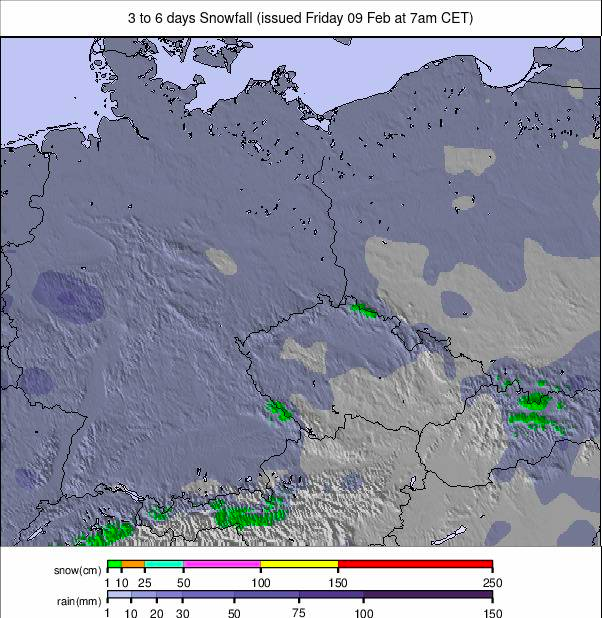
Image: Germany snowfall forecast for the next 3-6 days.
SCANDINAVIA REPORT
Scandinavian ski areas are in very good shape overall, but they were hit by severe storm force wins of up to 180 kilometres per hour (113 mph) at the end of last week, closing many centres in Norway and Sweden for several days as it blew through, and there have been more gusty, windy days since. Other than that though, conditions are pretty positive with most of the region’s slopes open and snow depths growing. Several resorts reported the storm had left over 30cm (a foot) of fresh snow, but also warned of snowpack instability. Myrkdalen (130/200cm / 52/80”) near Voss in Norway is posting the region’s deepest snow, with Voss itself (125/150cm / 50/60”) in second place. Sweden’s Are (50/95cm / 20/38”) has the most terrain open – more than 80km (50 miles) of runs.
SCANDINAVIA FORECAST
A largely snowy forecast for Scandinavia still, although with a few sunny days in the mix. Temperatures typically between -2 and -20C with regular snow showers bringing 5-10 cm (2-4″) most days to most centres.
SCOTLAND REPORT
The forecast has been hard to pin down for Scotland over the past week, with warm southerly airflows hitting colder air from the north. The former has brought a lot of precipitation so it has been down to how cold the air might get due to the latter. Unfortunately, so far the answer has been, mostly, not cold enough. There has been more snow on mountain tops but the country’s ski centres have faced snow loss due to rain and mild air with galeforce winds continuing to make their presence felt as well. Therefore, most have been closed yet again for much of the past week, and when open it’s mostly been back to the all-weather-snowmaking maintained nursery slopes at the base of the hills.
SCOTLAND FORECAST
There’s some hope of improving conditions. Less precipitation is forecast but we should be getting back below freezing more consistently, so there will at least be something to build on and any surviving snow can potentially be knocked back into shape.

Image: UK and Northern Ireland snowfall forecast for the next 3 days.
SPAIN / ANDORRA REPORT
It’s been a month now of almost non-stop sunny days with the freezing point all too often high above the highest peaks in the Pyrenees, at over 3,000m, so the battle to keep slopes open continues and the reality is that the existing snowpack is mostly very hard packed snow. The region’s largest area, Andorra’s Grandvalira (25/70cm / 10/28”), continues to post about half its terrain open, although in truth higher areas like Pas de la Casa have more open, and lower areas have less. It’s a bigger struggle for some centres like Spain’s Formigal (15/45cm / 6/18”), which has only a quarter of its 143 km (90 miles) of slopes open.
SPAIN / ANDORRA FORECAST
Temperatures are expected to finally start falling below freezing from Thursday, with some snowfall to come from Friday through the weekend. Potentially as much as 30 cm (12”) by Monday down to low elevations.
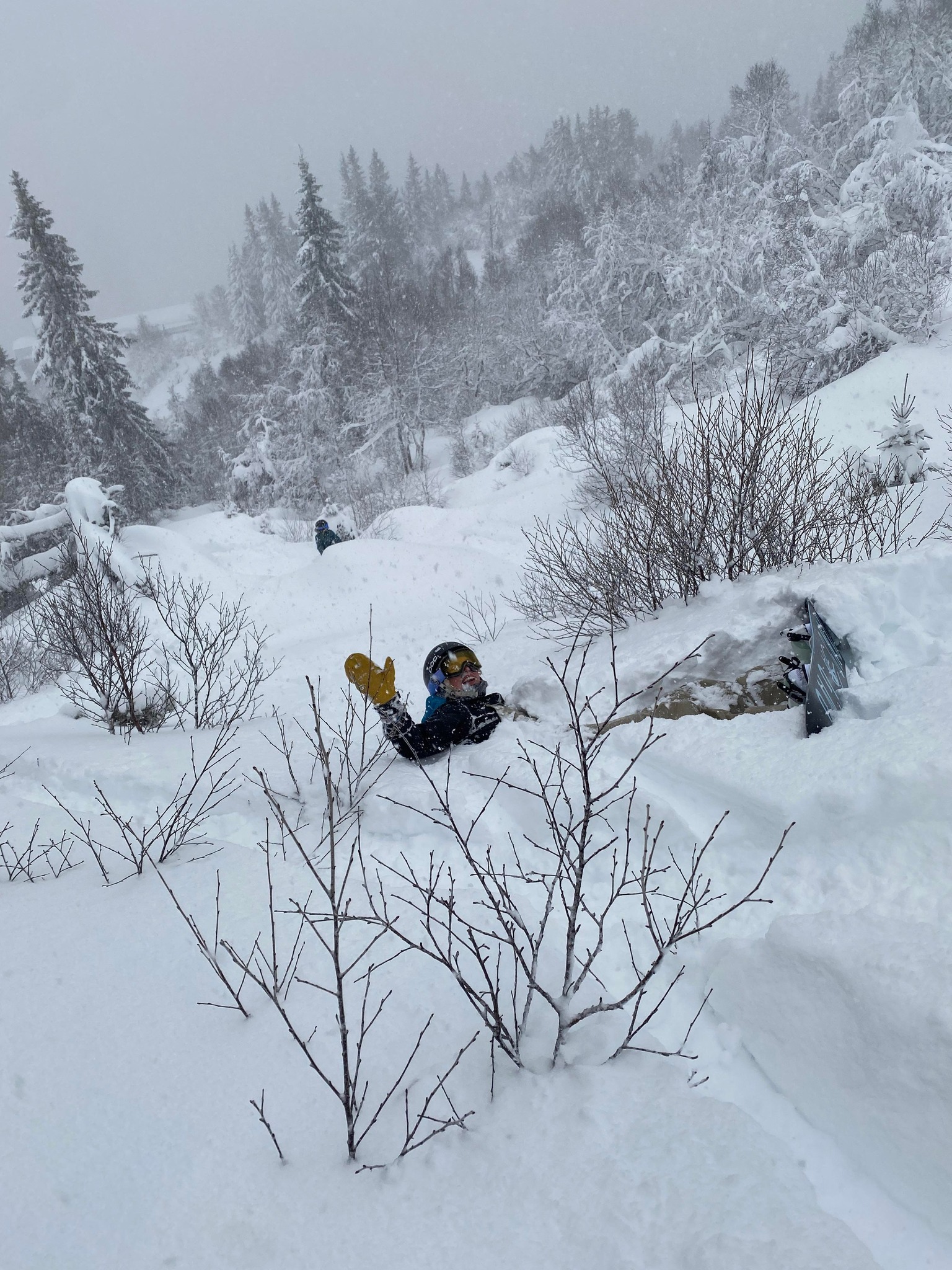
BULGARIA / ROMANIA REPORT
A mostly sunny week in Bulgaria and Romania although the occasional light snow shower up high has bubbled up. We’ve seen colder temperatures down here than in the Alps for the second week, although not by much. Valley highs have remained in single figures above freezing in the afternoons though and overnight lows up high have become well below freezing. This would be keeping the snow fresher if it was not mostly old/machine-made. Bansko (15/90 cm / 6/36”) has jumped to almost 100% open ahead of hosting World Cup races, Borovets (125/135 cm / 50/54”) continues to post Bulgaria’s deepest snow and remains over 90% open.
BULGARIA / ROMANIA FORECAST
Staying mostly sunny through the coming week. Overnight lows up high -5C, daytime highs down low up to +10C.
CZECH REPUBLIC / SLOVAKIA REPORT
It’s been a little cooler in the Czech and Slovak Republics than further south and less sunshine too. Unfortunately, this has meant rain on many slopes towards the end of last week, but then it did turn to snow overnight, then to sunshine to start this week. Higher altitude centres in the region have most of their runs open, lower centres half, on average. In the Czech Republic Špindlerův Mlýn (70/125 / 28/50”) is almost fully open, in the Slovak Republic it’s Jasna (40/100cm / 16/40”) with the most terrain open in the wider region more than 90% of its 50km (31 miles) plus of slopes.
CZECH REPUBLIC / SLOVAKIA FORECAST
Cold and cloudy with more snowfall up high, and rain at lower elevations through the remainder of this week.

